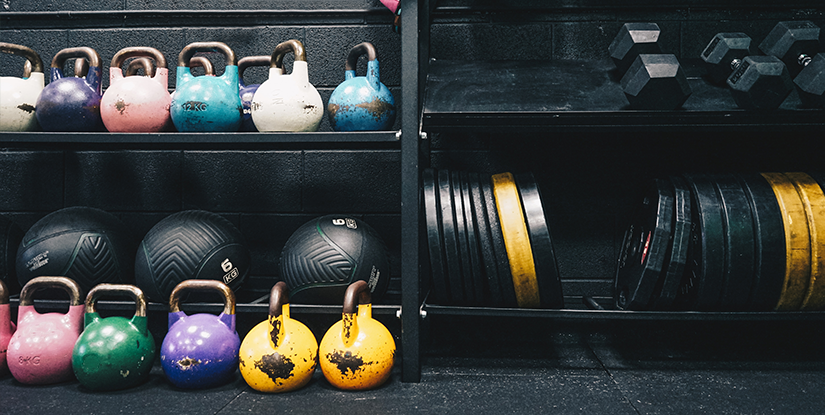Gym Accessories: Essential Equipment, Buying Guide & Maintenance

Gym Accessories: Essentials and Best Practices
A curated selection of gym accessories enhances performance, safety and longevity of training routines. Whether equipping a commercial facility or a home gym, selecting the right accessories—based on training goals, available space and budget—delivers measurable benefits. This guide outlines core categories, selection criteria, maintenance practices and practical tips for professionals and serious exercisers.
Core Categories of Gym Accessories
Grip and Support: lifting straps, weight belts, wrist wraps and knee sleeves that protect joints and improve force transfer.
Flooring and Protection: rubber mats, interlocking tiles and bumper plates that protect surfaces and reduce noise.
Storage and Organization: racks, shelves and wall mounts that preserve space and extend equipment life.
Cardio and Recovery Aids: skipping ropes, resistance bands, foam rollers and massage tools that support warm-ups and cool-downs.
Small Functional Tools: kettlebells, medicine balls, adjustable dumbbells and plyo boxes for versatile programming.
How to Choose Accessories: A Practical Buying Guide
Evaluate accessories through three lenses: functionality, durability and ergonomics. Prioritize items that match training modalities—powerlifting, CrossFit, HIIT or rehabilitation—and check specifications like load rating, material composition and warranty. For commercial use, favor industrial-grade materials such as vulcanized rubber, reinforced nylon and stainless steel; for home gyms, balance cost with multi-functionality.
Material and Construction Considerations
Rubber and Urethane: preferred for plates and flooring due to shock absorption and durability.
High-Density Foam: ideal for rollers, plyo boxes and padding—ensure closed-cell construction to resist sweat and bacteria.
Metal Alloys and Coatings: choose powder-coated or stainless finishes to prevent corrosion in humid environments.
Textiles: invest in breathable, reinforced fabrics for belts and straps; look for double-stitching and abrasion-resistant fibers.
Space Optimization and Layout
Plan accessory placement to maximize flow and safety. Use vertical storage for bars and plates, wall-mounted racks for bands and ropes, and modular shelving for small items. Maintain clear movement corridors and position recovery areas away from heavy lifting zones to minimize cross-traffic and injury risk.
Maintenance and Hygiene Best Practices
Regular maintenance extends accessory lifespan and preserves user health. Implement daily wipe-downs with approved disinfectants, weekly deep cleans for mats and upholstery, and monthly inspections for wear—especially on straps, seams and load-bearing points. Replace items that show structural compromise rather than attempting repairs that could fail under load.
Safety and Compliance
Adhere to safety standards applicable in your region and industry. For commercial facilities, maintain inspection logs and staff training on proper accessory use. Ensure weight-rated items display clear load capacity, and keep emergency procedures and first-aid accessible. Train users on progressive overload principles to avoid acute injuries tied to accessory misuse.
Cost-Effective Strategies
Prioritize multifunctional accessories that support multiple training styles—adjustable dumbbells, resistance bands with varied tensions and stackable plyo boxes. Purchase critical items new, and source supplemental gear refurbished or from reputable secondary markets. Consider manufacturer warranties and bulk-purchase discounts when outfitting multiple stations.
Choosing Accessories by Training Goal
Strength and Power: prioritize lifting belts, chalk or grip products, heavy-duty plates and barbell pads.
Endurance and Cardio: invest in quality ropes, mats for floor work and compact ergometers where space permits.
Mobility and Recovery: foam rollers, mobility bands and massage tools should be readily available and durable.
Sustainability and Longevity
Choose accessories produced with recyclable materials and durable construction. Extended lifecycles reduce replacement frequency and environmental impact. When disposing of old items, follow local recycling guidelines—many rubber and metal accessories can be repurposed or recycled.
Implementation Checklist
Identify primary training modalities and user volume.
Allocate budget across core categories: protection, storage, small tools, recovery.
Specify materials and load ratings, and require warranty documentation.
Design storage layout for efficiency and safety.
Implement maintenance schedule and user guidance signage.
FAQs
-
Q: What are must-have accessories for a home gym?
A: Adjustable dumbbells, resistance bands, a durable mat and a barbell with plates cover most needs.
-
Q: How often should accessories be inspected?
A: Daily visual checks, weekly function checks and monthly detailed inspections are recommended.
-
Q: Can cheaper accessories be safe?
A: Yes if they meet load ratings and material standards; avoid cutting costs on load-bearing or protective gear.
-
Q: How do I clean foam and fabric accessories?
A: Use mild detergent or approved disinfectant, avoid soaking, and air-dry fully.
-
Q: Are urethane plates better than rubber?
A: Urethane is more durable and cleaner but usually costlier; choose based on budget and usage intensity.
-
Q: What storage prevents accessory damage?
A: Vertical racks, wall mounts and dedicated shelving reduce wear and improve safety.
-
Q: When should accessories be replaced?
A: Replace at first sign of structural damage, persistent tearing or failure of load-bearing components.
-
Q: Are warranties common for accessories?
A: Many manufacturers offer warranties, especially on commercial-grade gear—review terms carefully.
-
Q: How to choose accessories for mixed-use facilities?
A: Select commercial-grade, versatile items and increase inventory of high-use accessories to avoid bottlenecks.

